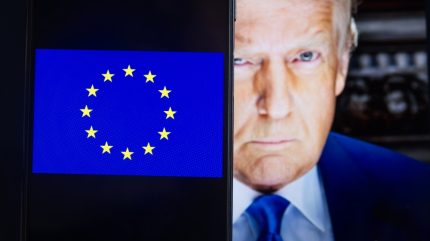
The European Union (EU) will pay the US a tariff rate of 15% for pharmaceuticals as part of a new trade deal between the two countries, though uncertainty on future duties remains.
The trade deal encompasses a wide variety of industries, including cars, timber, and aluminium. The White House did not reveal full details on the pharmaceutical import framework agreed with the EU, though said that the 15% tariff rate “fundamentally rebalances the economic relationship between the world’s two largest economies”.

Discover B2B Marketing That Performs
Combine business intelligence and editorial excellence to reach engaged professionals across 36 leading media platforms.
Pharmaceutical relations between the US and Europe have been tested this year as US President Donald Trump imposed blanket tariffs that have impacted medicine supply chains. Pharmaceutical products had previously been exempt from duties, but the industry was bracing for targeted duties due to US government investigations.
Many multinational pharma companies have been vocal in their opposition to high levies and were even bracing themselves for a rate as high as 200%, as threatened by Trump. This remark was made in the wake of the initiation of the government’s Section 232 investigation into the drug sector, which is evaluating the role of medicine imports on national security. The outcome of the probe is due by August – it is unclear if Trump will add further duties.
However, in a statement, European Commission (EC) President Ursula von der Leyen said Europe will not accept rate additions: “This 15% is a clear ceiling. No stacking. All-inclusive.”
Medicines are the largest European exports to the US by value, and the EU accounts for approximately 60% of all pharmaceutical imports to the US. Top-selling drugs such as AbbVie’s Humira (adalimumab), MSD’s Keytruda (pembrolizumab), and Novo Nordisk’s Ozempic (semaglutide) are manufactured in Europe and sent to the US, meaning drugs that represent billion-dollar markets will be affected.

US Tariffs are shifting - will you react or anticipate?
Don’t let policy changes catch you off guard. Stay proactive with real-time data and expert analysis.
By GlobalDataAccording to US Pharmacopeia, a nonprofit that tracks the drug supply chain, Europe manufactures the active ingredients for 43% of brand-name drugs administered in the US.
Whilst the tariff rate is a blanket levy that applies to branded products, certain generic drugs will be exempt. Neither the White House nor the EC responded to Pharmaceutical Technology when asked which generics would be immune to the agreement.
Whilst the agreed 15% rate is lower than rates threatened by Trump earlier in the year, it still represents a setback to the global pharma industry. New import costs will likely add billions of dollars in expenses for drugmakers, which will likely be passed onto patients via higher drug costs.
Analysts forecast that 15% levies could ramp up industry costs by $13bn to $19bn per year, according to Reuters.
The European Federation of Pharmaceutical Industries and Associations (EFPIA) has maintained that tariffs on medicines are ineffective.
“Tariffs on medicines are a blunt instrument that will disrupt supply chains, impact on investment in research and development, and ultimately harm patient access to medicines on both sides of the Atlantic,” the trade body said in a statement.
The EFPIA added: “There are more effective means than tariffs that would help, rather than hinder, global advances in patient care and economic growth.”
Reacting to the tariff rate more broadly, French Prime Minister François Bayrou said the EU had capitulated to Donald Trump, remarking it was a “dark day” for the EU.
Some economic observers have commented that the UK could stand to benefit from the trade deal, as its tariff rate remains set at 10%.





